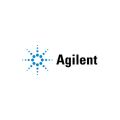
Overview
The construction industry relies heavily on safety protocols and compliance measures to ensure the well-being of workers and the public. Hydrogen cyanide gas detectors offer a crucial tool in maintaining safety standards within construction sites, particularly in scenarios involving potential exposure to this hazardous gas.
Hydrogen cyanide (HCN) is a colorless, highly toxic gas that can be released during various construction activities, particularly those involving combustion processes or the use of certain chemicals. Some common sources of HCN in construction include burning materials containing nitrogen and carbon, such as insulation, plastics, and rubber, as well as the use of certain solvents and pesticides.
Depending on specific features and functions, GAO Tek’s Hydrogen cyanide gas detectors are sometimes referred to as HCN gas detectors, cyanide gas sensors, hydrogen cyanide monitors, CN gas alarms, prussic acid detectors, hydrocyanic acid sensors, cyanide vapor detectors, HCN gas analyzers, cyanide alert systems, hydrogen cyanide detection devices
Furthermore, GAO Tek’s Hydrogen cyanide gas detectors are further grouped into:
Benchtop, Calibrated, Fast-response, Handheld, Alarm, Rugged, and Wireless.
GAO Tek’s Hydrogen cyanide gas detectors have the following applications in the construction industry:
- Confined Space Monitoring: GAO Tek’s HCN gas detectors are vital for continuous monitoring of enclosed spaces such as tunnels and utility vaults, where combustion processes or chemical reactions may elevate HCN levels, posing risks to workers’ safety.
- Welding and Cutting Operations: Portable gas detectors equipped with GAO Tek’s HCN sensors offer real-time monitoring during welding and cutting activities, where HCN generation is common. This enables prompt adjustments to ventilation systems and implementation of protective measures to reduce exposure risks.
- Chemical Storage Areas: GAO Tek’s Detectors installed near chemical storage areas serve as early warning systems for detecting leaks from improperly sealed containers. Swift detection and response prevent potential cyanide exposure incidents and environmental contamination.
- Emergency Response Systems: Integrated emergency response systems, including HCN gas detectors, enhance preparedness by accurately detecting gas releases during safety drills. This allows construction teams to practice timely evacuation procedures and efficient hazard containment protocols.
- Regulatory Compliance: GAO Tek’s HCN gas detectors ensure construction sites adhere to safety standards and guidelines regarding HCN exposure limits, contributing to regulatory compliance and mitigating legal liabilities.
- Air Quality Monitoring: GAO Tek’s HCN gas detectors monitor air quality during various construction activities, providing valuable data to inform decision-making and mitigate potential health risks to workers exposed to HCN.
- Construction Site Safety: By providing early detection of HCN hazards, gas detectors contribute to overall construction site safety, minimizing the risk of cyanide exposure incidents and ensuring a safer working environment for construction workers.
- Training Programs: Training programs on the proper use and maintenance of GAO Tek’s HCN gas detectors are essential to maximize their effectiveness. These programs ensure that construction workers are adequately prepared to respond to potential HCN exposure incidents, enhancing overall safety protocols on construction sites.
More information on hydrogen cyanide gas detectors and their applications in other industries can be found on Hydrogen cyanide gas detectors. This category page lists related products Environmental.
Systems in the Construction Industry Utilizing hydrogen cyanide gas detectors
Here are some popular systems in the construction industry using hydrogen cyanide gas detectors:
Fossil Fuel Power Plants:
- Emissions Monitoring System: This system integrates hydrogen cyanide gas detectors into a comprehensive emissions monitoring framework. Software applications include data analysis software that tracks HCN levels over time, generates compliance reports, and alerts operators to any deviations from regulatory limits.
Biomass Energy Production Facilities:
- Combustion Control System: Incorporates hydrogen cyanide gas detectors into the control system to monitor emissions from biomass combustion. Software may include real-time monitoring and control software that adjusts combustion parameters based on HCN levels to optimize efficiency and minimize emissions.
Hydrogen Production Plants:
- Process Safety Management System: Utilizes hydrogen cyanide gas detectors as part of a safety management system for hydrogen production processes. Software applications include risk assessment software that models potential HCN exposure scenarios and emergency response software that provides guidance in a gas leak.
Waste Incineration Plants:
- Environmental Monitoring System: Integrates hydrogen cyanide gas detectors with environmental monitoring systems to track emissions from waste incineration. Software applications may include geographic information system (GIS) software for spatial analysis of emissions data and reporting software for regulatory compliance.
Chemical Manufacturing Facilities:
- Process Control System: Incorporates hydrogen cyanide gas detectors into the process control system to monitor HCN levels in chemical manufacturing processes. Software applications include batch processing software that tracks HCN concentrations during production runs and alarm management software that notifies operators of abnormal conditions.
Hydrocarbon Processing Plants:
- Safety Instrumented System (SIS): Integrates hydrogen cyanide gas detectors with the SIS to provide a layer of protection against HCN exposure in hydrocarbon processing plants. Software applications include safety instrumented system software that performs logic calculations to initiate safety shutdowns in response to high HCN levels.
Research and Development Laboratories:
- Laboratory Information Management System (LIMS): Utilizes hydrogen cyanide gas detectors in research and development laboratories for energy production. Software applications include LIMS software that tracks sample analysis results, maintains inventory records of chemical reagents, and manages safety data sheets for hazardous materials.
Overall Monitoring and Management System:
- Enterprise Resource Planning (ERP) Software: Provides an integrated platform for managing all aspects of energy production operations, including the use of hydrogen cyanide gas detectors. ERP software may include modules for inventory management of detector components, scheduling maintenance tasks, and generating compliance reports for regulatory agencies.
GAO Tek’s targeted markets are North America, particularly the U.S. and Canada.
Complying with Government Regulations
GAO Tek’s hydrogen cyanide gas detectors comply or help our customers comply with U.S. government regulations such as:
- Occupational Safety and Health Administration (OSHA) Standards (29 CFR)
- Environmental Protection Agency (EPA) Regulations
- National Institute for Occupational Safety and Health (NIOSH) Guidelines
- National Fire Protection Association (NFPA) Standards
- International Fire Code (IFC) and International Building Code (IBC)
- Department of Transportation (DOT) Regulations
- National Fire Alarm and Signaling Code
- State and Local Regulations
GAO Tek’s hydrogen cyanide gas detectors comply or help our clients comply with Canadian regulations such as:
- Workplace Hazardous Materials Information System (WHMIS)
- Canadian Environmental Protection Act, 1999 (CEPA)
- Canada Labour Code
- Occupational Health and Safety Regulations (OHSR)
- Canadian Biosafety Standards and Guidelines
- Transportation of Dangerous Goods Regulations (TDG)
- Canadian Standards Association (CSA) standards
- Provincial regulations
Case Studies of Hydrogen cyanide gas detectors in the Construction Industry
Hydrogen cyanide gas detectors are sometimes called hcn gas detectors, prussic acid gas detectors, hydrocyanic acid gas detectors, cyanide gas detectors, acn gas detectors, blue acid gas detectors, zyklon b detectors, bitter almond gas detectors, cyanogas detectors, prussian acid gas detectors.
Here are some practical examples of using hydrogen cyanide gas detectors in construction industry:
In the construction industry, safety is paramount, and hydrogen cyanide (HCN) gas detectors play a crucial role in upholding these standards and mitigating risks. These detectors are indispensable tools across various construction operations, ensuring the protection of workers and compliance with safety regulations.
Confined space monitoring is one area where HCN gas detectors excel. In tunnels, utility vaults, and other enclosed spaces, these detectors continuously monitor HCN levels, alerting workers to potential hazards from combustion or chemical reactions, thus minimizing the risk of cyanide exposure.
During welding and cutting operations, where HCN generation is common, portable gas detectors with specialized sensors offer real-time monitoring capabilities. This enables workers to adjust ventilation systems and implement protective measures promptly, reducing the risk of HCN exposure.
HCN gas detectors also play a crucial role in early leak detection near chemical storage areas. By swiftly detecting leaks from improperly sealed containers, these detectors facilitate rapid response, preventing potential cyanide exposure incidents and environmental contamination.
Integrated emergency response systems, including HCN gas detectors, enhance preparedness by accurately detecting gas releases during safety drills. This enables construction teams to practice timely evacuation procedures and efficient hazard containment protocols.
Moreover, detectors installed near chemical storage areas serve as early warning systems, alerting workers to potential leaks and enabling swift response to prevent cyanide exposure incidents.
In addition to their proactive monitoring capabilities, HCN gas detectors contribute to regulatory compliance by ensuring that construction sites adhere to safety standards and guidelines regarding HCN exposure limits.
The versatility of HCN gas detectors extends to their ability to monitor air quality during various construction activities, providing valuable data to inform decision-making and mitigate potential risks to workers’ health.
Furthermore, advancements in HCN detection technology continue to improve the efficacy of these detectors, offering enhanced sensitivity and accuracy in detecting even trace amounts of HCN in the environment.
Training programs on the proper use and maintenance of HCN gas detectors are essential to maximize their effectiveness and ensure that construction workers are adequately prepared to respond to potential HCN exposure incidents.
Collaboration between construction companies, regulatory agencies, and technology providers is essential to drive innovation in HCN detection technology and promote the widespread adoption of these life-saving devices across the industry.
Overall, hydrogen cyanide gas detectors are indispensable tools in the construction industry, safeguarding workers and the environment by providing early detection of HCN hazards and enabling prompt response to mitigate risks effectively.
GAO RFID Inc., a sister company of GAO Tek Inc., is ranked as the top 10 RFID suppliers in the world. Its RFID, BLE, and IoT products have also been widely used in the construction industry. Articles about related industries are given below:
Use of Hydrogen cyanide gas detectors with Leading Software and Cloud Services in the Construction industry
GAO Tek has used or has facilitated its customers to use GAO’s hydrogen cyanide gas detectors with some of the leading software and cloud services in their applications. Examples of such leading software and cloud services include:
- Honeywell Safety Suite Device Configurator
- Industrial Scientific iNet Control
- RAE Systems ProRAE Studio II
- GasBadge Pro Configuration and Data Management Software
- Blackline Safety G7 Configuration Software
- MSA Link Pro Software
- Draeger Gas Vision Software
- RKI Instruments SDM-6000 Calibration Station Software
- TSI DigiTrak Falcon Configuration Software
- Sensidyne Gas Detection Management Software
- GfG Instrumentation GMA Manager Software
- 3M Detection Management Software
- Ion Science GasCheck G Software
- Teledyne Gas and Flame Detection D-Guard Configuration Software
- Sensit Technologies GMI Configurations and Data Management Software
- Dräger CC-Vision Software
- Thermo Scientific DataTrak II Software
- Bacharach MGS-400 Gas Detection Series Mobile App
- Interscan Corp GasD 8000 Remote Software Suite
- RKI Instruments Beacon 110 and Beacon 800 Configuration Software.
GAO Tek’s hydrogen cyanide gas detectors and their applications in other industries are listed on Hydrogen cyanide gas detectors. Other related products can be found on this category page Environmental.
Meeting Customers’ Demands
Large Choice of Products
To satisfy the diversified needs of their corporate customers, GAO Tek Inc. and its sister company GAO RFID Inc. together offer a wide choice of testing and measurement devices, network products, RFID, BLE, IoT, and drones.
Fast Delivery
To shorten the delivery to our customers, GAO has maintained a large stock of its products and can ship overnight within the continental U.S. and Canada from the nearest warehouse.
Local to Our Customers
We are located in both the U.S. and Canada. We travel to customers’ premises if necessary. Hence, we provide strong local support to our customers in North America, particularly the U.S. and Canada.
Furthermore, we have built partnerships with integrators, consulting firms, and other service providers in different cities to further strengthen our services. Here are some of the service providers in the construction industry. We have worked with to serve our joint customers:
- Abbott Informatics (formerly STARLIMS)
- Accelerated Technology Laboratories, Inc. (ATL)
- Accenture
- Agilent Technologies
- Astrix Technology Group
- BIOVIA (formerly Accelrys)
- Booz Allen Hamilton
- Boston Consulting Group (BCG)
- Capgemini
- CGI
- Cognizant
- Core Informatics (a part of Thermo Fisher Scientific)
- CSols, Inc.
- Data Unlimited International, Inc. (DUI)
- Deloitte Consulting LLP
- DXC Technology
- Ernst & Young LLP (EY)
- Freezerworks
- Huron Consulting Group
- IBM Global Business Services
- Infosys
- Intellitech Canada Inc.
- KPMG LLP
- LabAnswer
- LabLynx, Inc.
- LabVantage Solutions
- LabWare, Inc.
- McKinsey & Company
- Novatek International
- NTT DATA Services
- PerkinElmer Informatics
- PricewaterhouseCoopers (PwC)
- Qualtrax
- RURO, Inc.
- Slalom Consulting
- Tata Consultancy Services (TCS)
- Thermo Fisher Scientific
- Waters Corporation
- Wipro Limited
- Xybion Corporation
- ZS Associates
GAO has Many Customers in the Construction Industry
The products from both GAO Tek Inc. and GAO RFID Inc. have been widely used in the construction industry by many customers, including some leading companies. Here is more information on applications of GAO RFID Inc.’s products in the construction industry. Articles about related industries are given below:
Here are some of GAO’s clients in the construction industry:
- 3M Construction Solutions
- Abbott Laboratories
- AbbVie Construction Technologies
- Agilent Technologies
- Aldevron Construction Services
- Amgen Construction Solutions
- Baxter International Construction Division
- GSK Vaccines
- Illumina Canada ULC
- Invitae Corporation
- Johnson & Johnson Construction Technologies
- Luminex Corporation Canada Inc.
- MilliporeSigma Construction Solutions
- Pall Canada Limited
- PerkinElmer Canada Inc.
- Pfizer Inc. – Construction Technologies
- Promega Corporation Canada
- STEMCELL Technologies Inc.


















Contact Us
Here are GAO Tek’s Hydrogen cyanide gas detectors and they are further organized by feature:
Benchtop, Calibrated, Fast-response, Handheld, Alarm, Rugged, and Wireless.
If you have any questions about our products or want to place an order, our technical experts can help you. Please fill out this form or email us.
